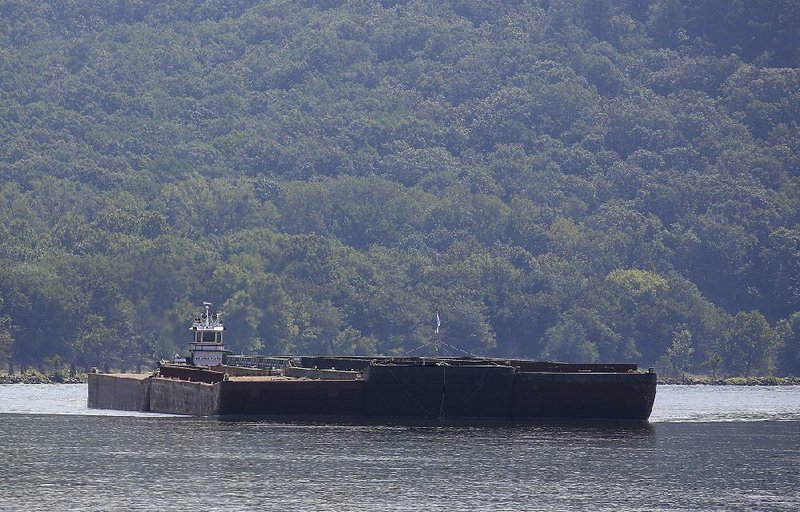Barge activity at the Port of Little Rock is returning to normal after historic Arkansas River flooding earlier this year, but the same cannot be said for barge traffic upriver from the port.
The Little Rock port worked 47 barges at its two docks and handled 73,000 tons of cargo in July. Both figures exceeded the numbers recorded in the same month in 2018 when the port worked 45 barges and handled 70,000 tons of cargo.
Last month's numbers also were more than three times the barges worked and cargo tonnage handled in June. The port wasn't able to receive its first barge until June 25, which was 49 days after the last vessel call to port. The port worked 14 barges and handled 21,000 tons of cargo in June.
"We're doing OK," said Bryan Day, executive director of the Little Rock Port Authority, which oversees the port.
Meanwhile, tonnage on the 455-mile McClellan-Kerr Arkansas River Navigation System remained at 50% of normal. The system, which winds from near Tulsa, Okla., to the confluence of the White and Mississippi rivers in southeast Arkansas, moved 501,173 tons of cargo in July.
July tonnage is well above the tonnage moved in May and June -- 150,315 tons and 212,173 tons, respectively -- but trailing the roughly 1 million tons of cargo the system normally moves in a month.
The knot in the system remains Oklahoma operations, which are impeded by continuing efforts to remove two barges that broke loose from their moorings and slammed into the lock and dam at Webbers Falls. The barges remain at the bottom of the pool against the dam.
"If we can't get Oklahoma opened up, it's going to hurt our tonnage figures," Deidre Smith, executive director of the Arkansas Waterways Commission, said Monday.
Agricultural interests west and north of the navigation system's terminus near Tulsa normally use the river to ship grain out and accept fertilizer, she said.
"I can tell you we are now moving barges all the way to Van Buren," Smith said. "Six barges to a tow instead of 15. It's great that it's moving in Arkansas, but we can't move anything in or out of Oklahoma."
The U.S. Army Corps of Engineers, which built and maintains the navigation system, was able to re-open the pool at Dardanelle. But the pool has a restriction on the width and length of the barge tows.
"Mariners are advised to limit tows through this temporary channel to no more than 70 feet wide (the width of 2 standard barges) and 3 standard barges long, and no passing is advised," the agency said in a notice to navigational interests published Friday.
Bids were open on a contract Monday for dredging to fully restore the navigation channel at Dardanelle, said Aaron McGee, operations project manager for the system's project office in Conway. He said a dredging barge will be on site within 30 days.
McGee also said damage from the flooding left some of the system's locks and dams operating during daylight hours only, mainly for personnel safety. Those locks and dams lost hand railings from the flooding, he said.
Flooding at two facilities damaged the winches used to speed up large barge tows, McGee said.
"We do have boats moving again," he said. "There's some operational challenges here and there, but we are doing our best to pass what we are able to through the system."
As bad as the flooding was, Day said he still expects the Little Rock port to match or even exceed last years totals for barges worked and cargo tonnage handled.
Through July, the port has worked 308 barges and handled 471,000 tons of cargo, which Day said is just 1 percent fewer than the 312 barges and 477,356 tons of cargo in the first eight months of 2018.
"We're not far behind last year, business is good, we have a lot of barges coming up river now that the river has dropped," Day said. "We are blessed and fortunate the river is navigable from Little Rock down. That's an anomaly on the river."
But he said the rest of the system has to work to have an effective navigation system.
"We're only as strong and productive as everybody on the river because you got to have barges coming up emptying and going down loaded," he said. "If we're not all functioning it makes it real hard to build that supply chain."
Business on 08/20/2019
